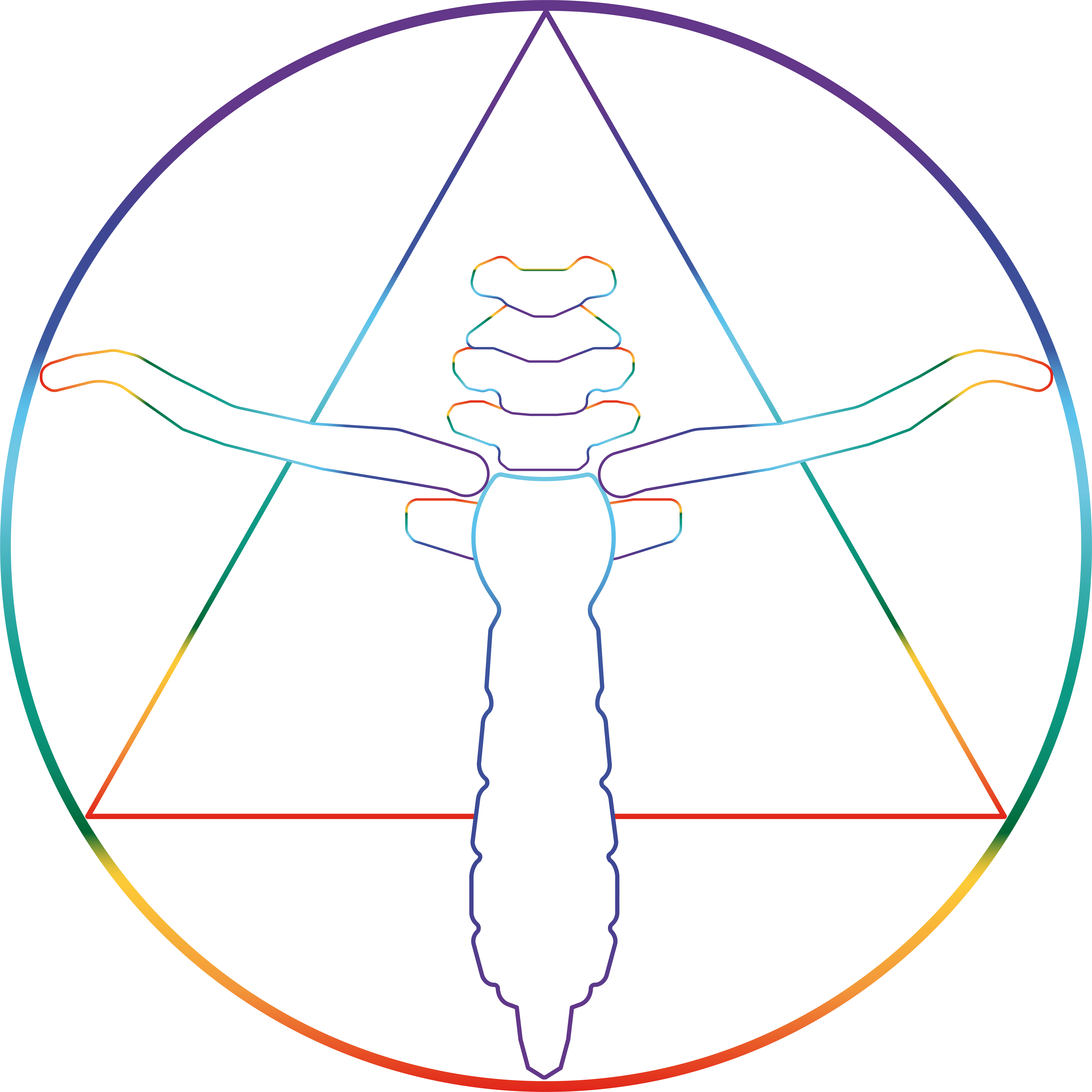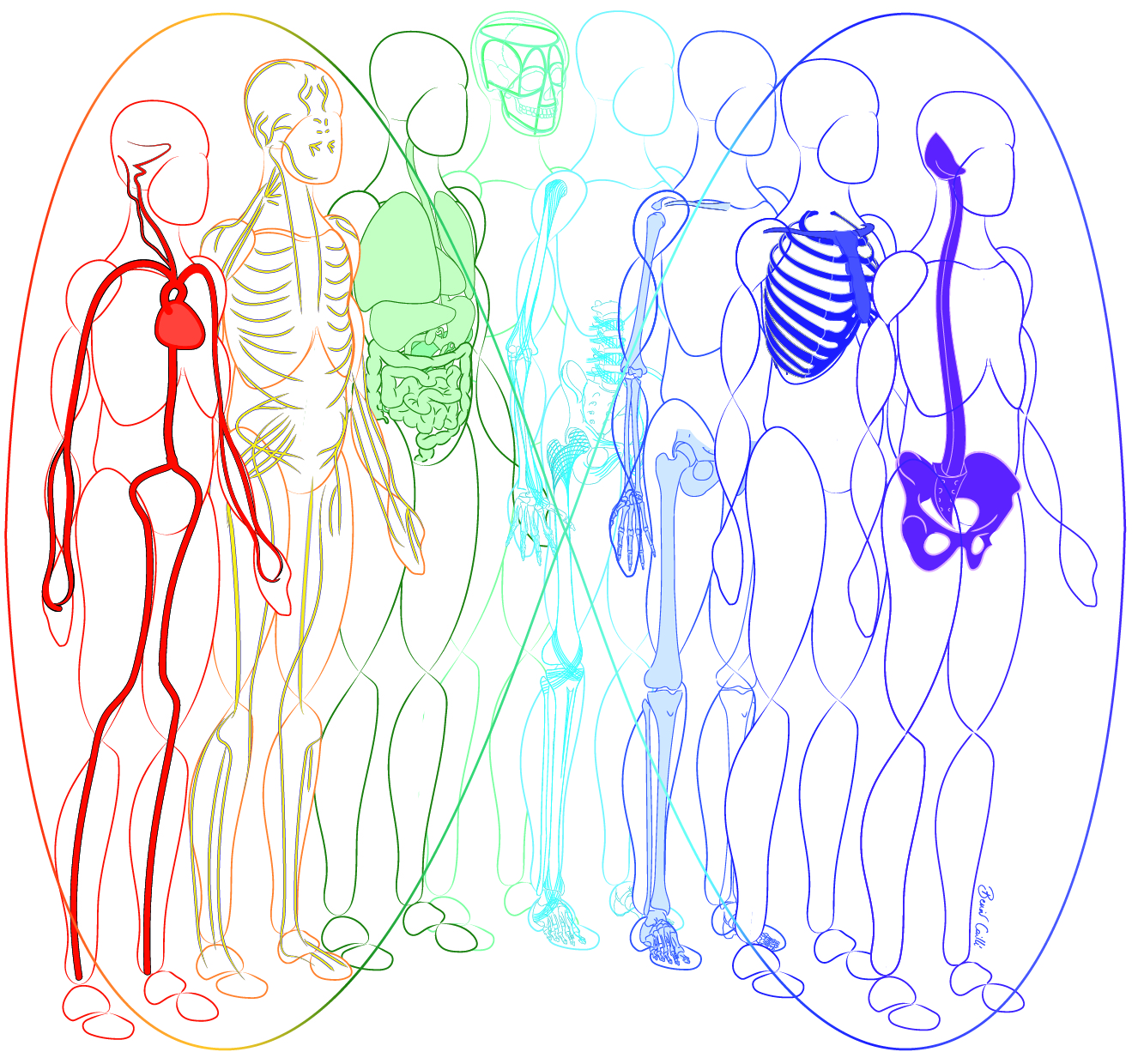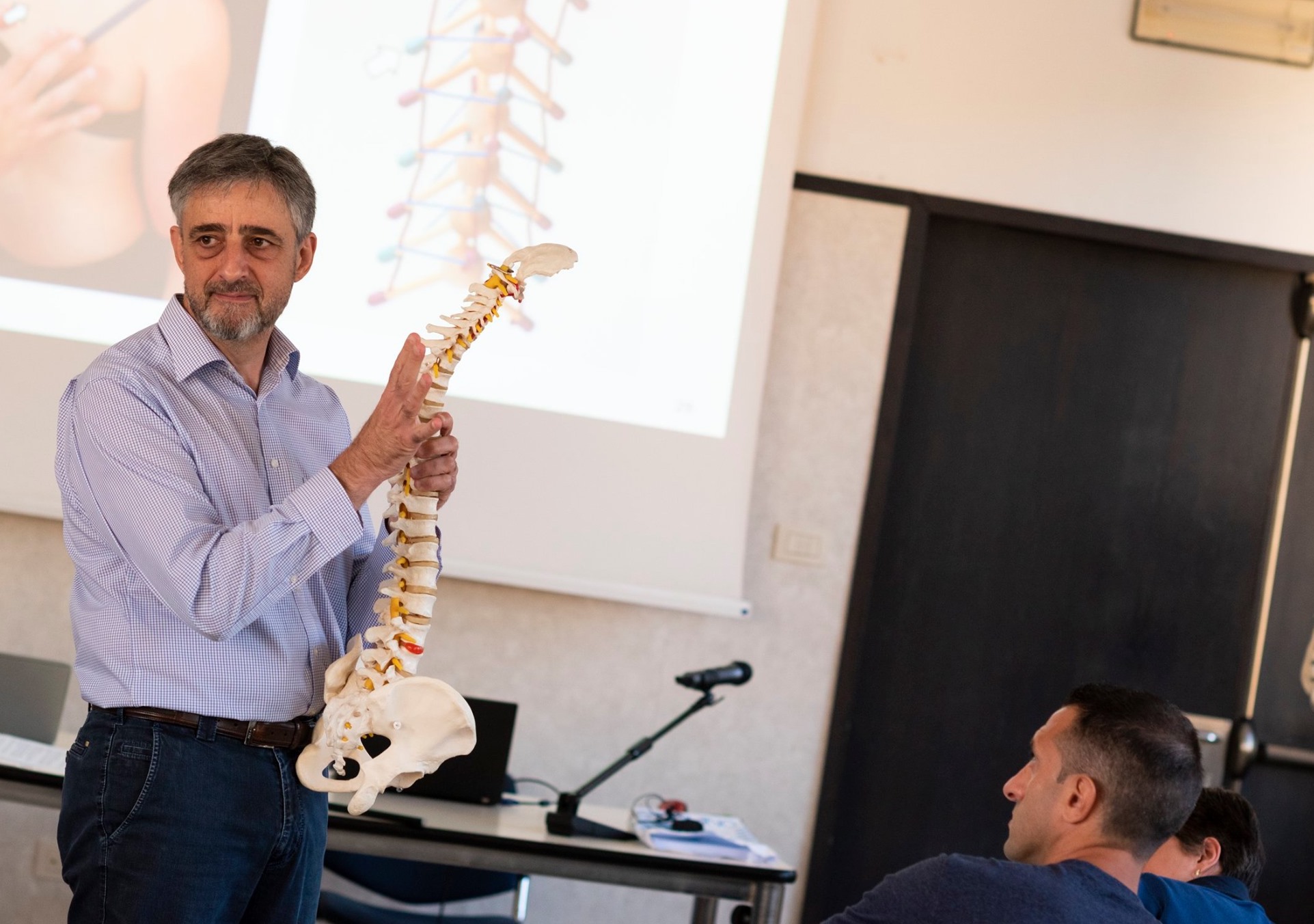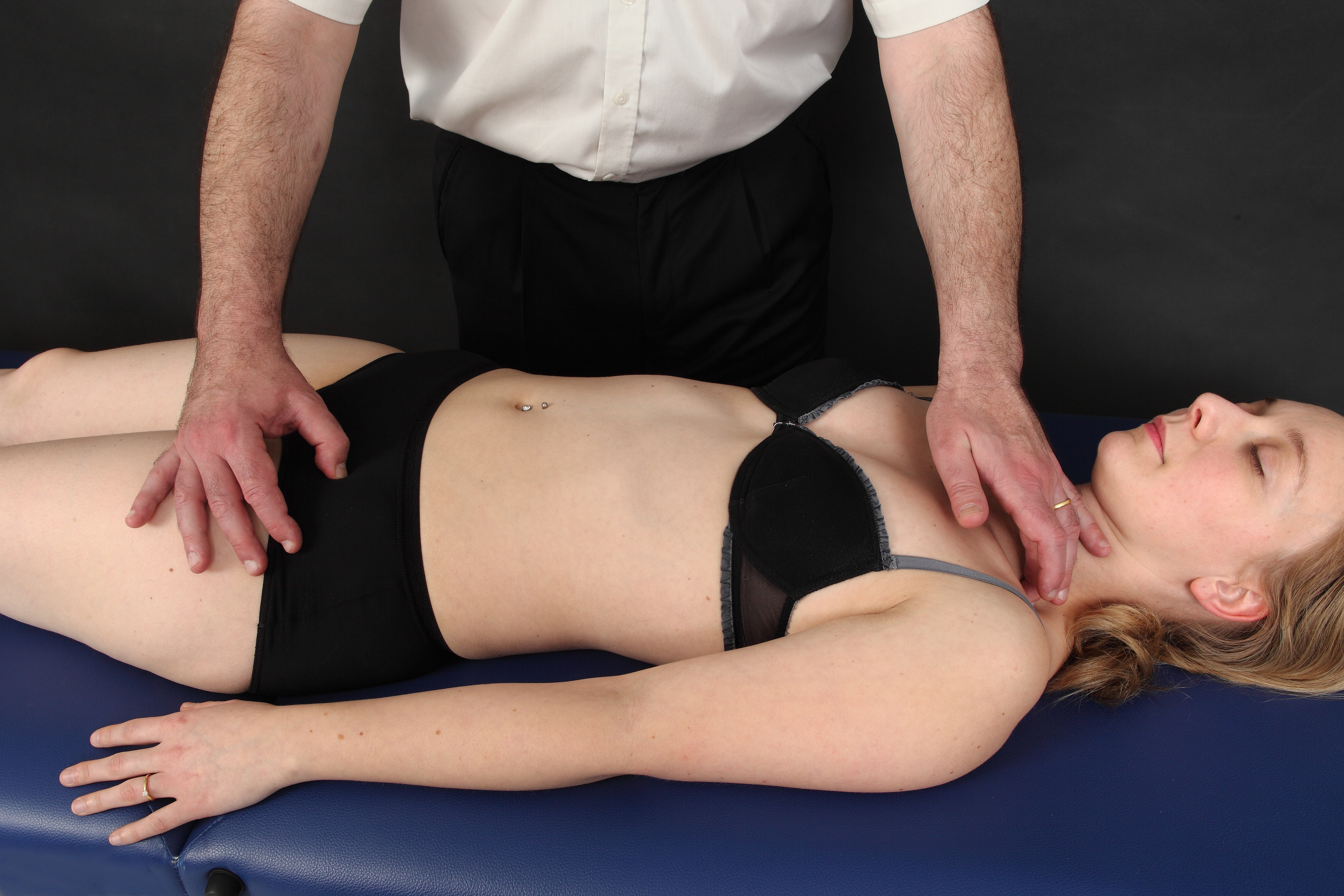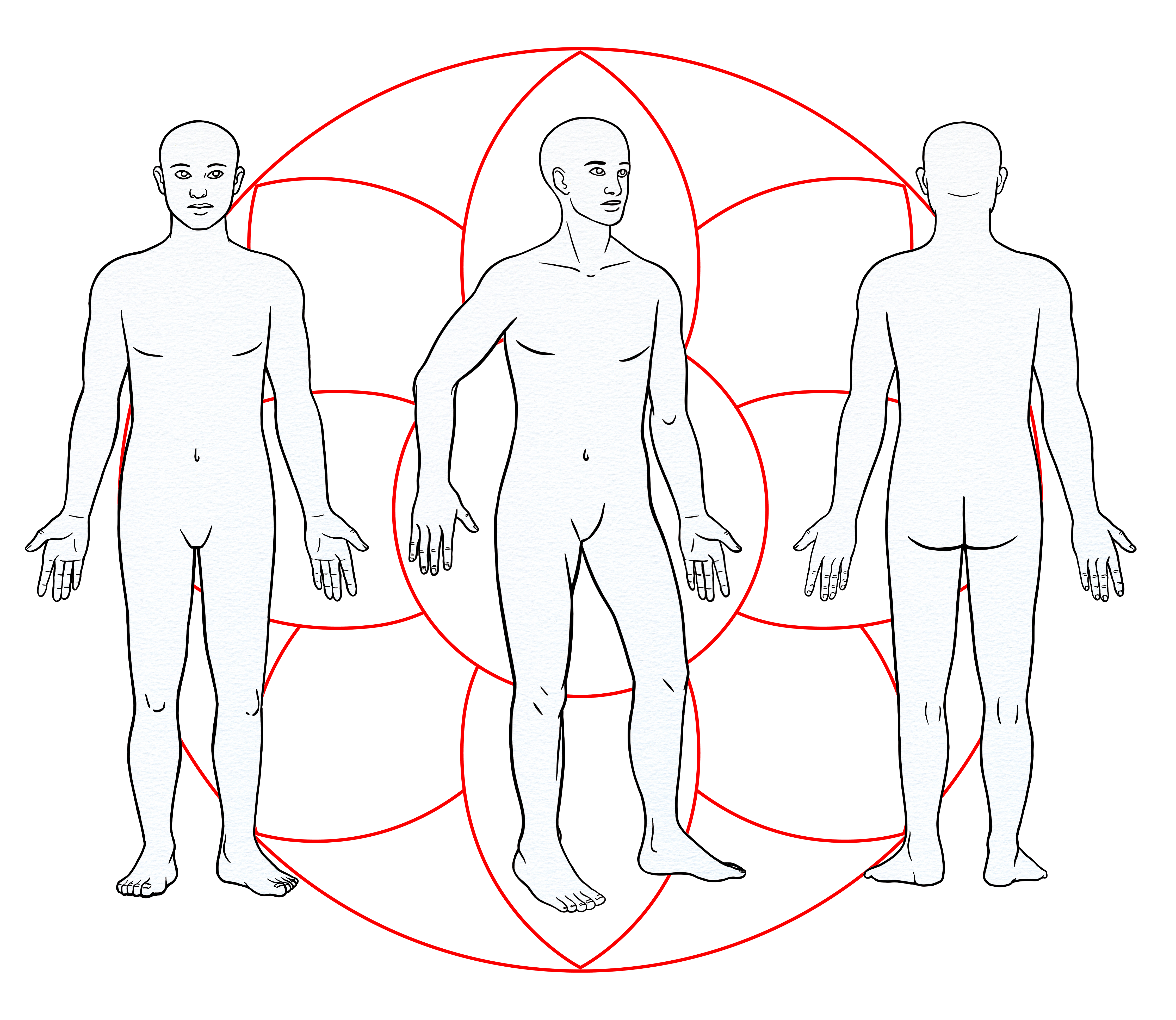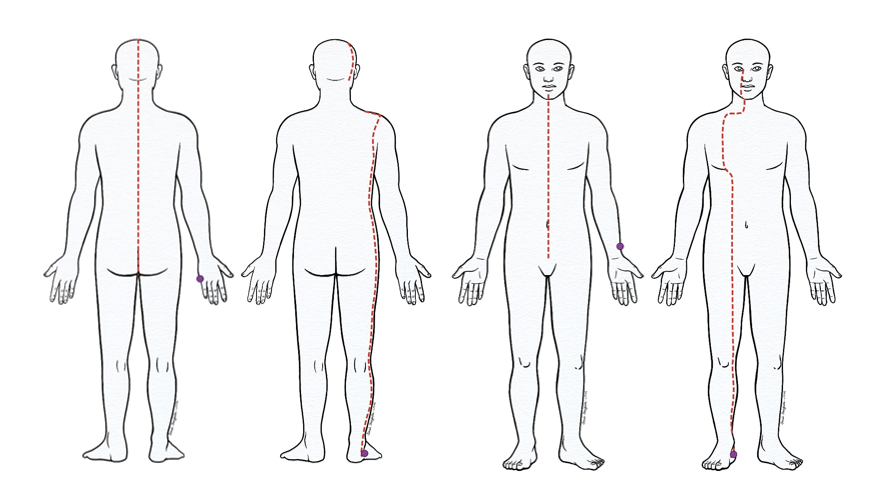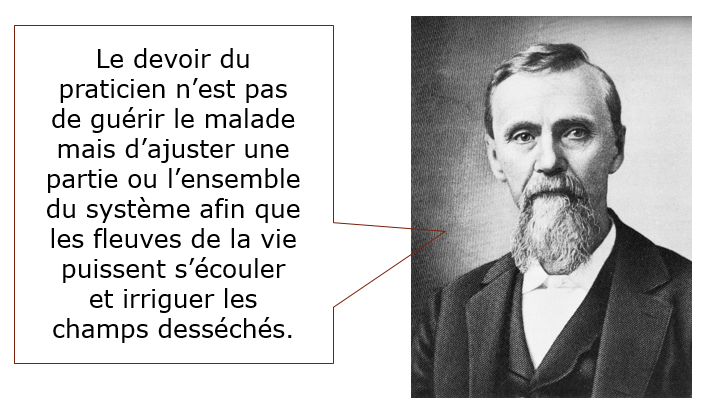The first family (EOV1) is formed by the following pairs:
- Governing Vessel and Yang Motility Vessel (Du Mai-Yang and Yang Qiao Mai)
- Conception Vessel and Yin Motility Vessel (Ren Mai and Yin Qiao Mai).
The 4 EV of the EOV1 family are linked to the sympathetic system and the endocrine system (hypothalamic-pituitary axis, pineal gland, thyroid, adrenals, ovaries and testicles).
Du Mai and Yang Qiao Mai couple.
Origin and acceleration of the Yang
The musculoskeletal system
This coupling associates the Governing Vessel and its complementary EV, the Yang Motility Vessel, in relation to the locomotor system (spine, head and extremities), the posterolateral muscular chain and all the fascial exoskeleton that allow standing and the body’s mobility.
These 2 EOV’s may be responsible for many musculoskeletal or neurological disorders, and some postural imbalances.
Their symptomatology is very similar but with manifestations that are more axial for the Governing Vessel and unilateral for the Yang Motility Vessel. For example, a median low back pain would be associated to a Governing Vessel dysfunction whereas a lumbo-sciatic pain would bring us to consider more the second EOV of this couple.
Ren Mai and Yin Qiao Mai couple
Origin and acceleration of the Yin
Extra-mesenteric visceral system and mostly hypophyseal controlled endocrine system.
This coupling associates the Conception Vessel and its complementary meridian, the Yin Motility Vessel, in relation to the endocrine system, the prevertebral plexus with visceral intent and the anteromedial myofascial chain.
In general, these 2 meridians are often involved with internal pathologies. We will more often encounter a Conception Vessel dysfunction in a young woman and a Yin Motility Vessel dysfunction in elderly people.
The second family (EOV2) is formed by the following pairs:
- Penetrating Vessel and Yin Linking Vessel (Chong Mai et Yin Wei Mai)
- Girdle Vessel and Yang Linking Vessel (Dai Mai et Yang Wei Mai).
The 4 meridians of the EOV2 family are predominantly linked to the parasympathetic system and the hormonal digestive system (pancreas and endocrine cells in the digestive system).
Chong Mai and Yin Wei Mai couple
Organization and preservation of the Yin
Vascular system and vagus nerve.
This pair associates the Penetrating Vessel and its complementary EV, the Yin Linking Vessel, in relation to the cardiovascular system and the vagus nerve linking the central nervous system and the enteric nervous system.
We find the deep central chain of the neck (visceral and vascular sheaths) and thorax (endothoracic fascia, pericardium and broncho-diaphragmatic membrane) connected to the diaphragm (phrenic center) and the psoas muscle.
In practice, all disorders with a vascular or emotional component depend on these 2 EOV’s.
Dai Mai and Yang Wei Mai couple
Organization and preservation of the Yang
Peripheral articular system and neuro-muscular system.
This pair formed by the Girdle Vessel and its complementary EV, the Yang Linking Vessel, is in relation to the articulations and the neuromuscular component of the locomotor system.
Here we have the crossing muscular chains connecting the pelvic and scapular girdles thus the upper and lower bodies, the front and the back, the right and the left of the body.
Many rheumatic diseases of the extremities or the girdles, as well as some dermatoses (especially those with itching) are caused by a dysfunction of this pair of EOV’s.
It is to be noted that all Extraordinary Vessels, with no exception, go through the thoracic diaphragm. Therefore, we should systematically integrate all the different pieces of the phrenic puzzle into the general osteopathic exam[1].
[1] Cf. chapter phrenic puzzle.








